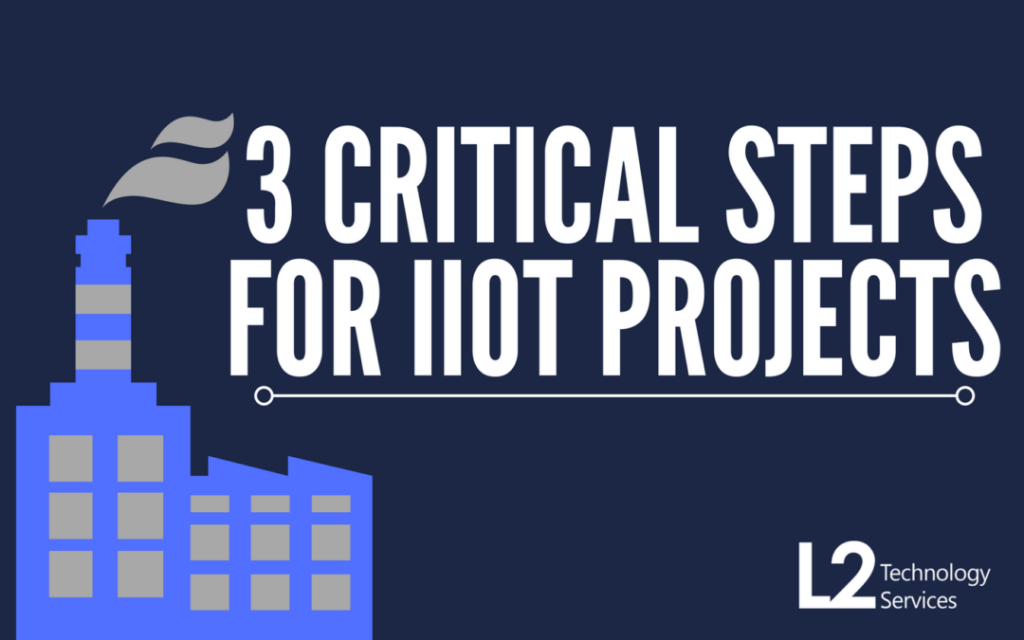As industrial organizations look to leverage the Internet of Things (IoT) to reduce costs and add value to their organizations, there are three topics which are critical enablers for the success of IIoT initiatives.
1. Document Requirements and Regulations
A successful initiative starts with strong documentation and understanding of requirements and limitations. Some of the best projects start from a simple idea, but it’s important to write down the requirements as it will help flesh out details and get everyone on the same page. Take time to understand what the needs are – they might stem from a set of business needs, technical needs, or even personal needs.
Understanding the goals of the leadership team goes a long way and pairing those expectations with feedback from the field will further contribute to success. Analyze how maintenance and operations teams are doing their jobs today – if possible, get out in the field and watch how the team does things. Talking with the people in the field goes a long way to understanding where pain points are and what kind of limitations or operational parameters might be in place.
Subject matter experts (SME) can also help identify regulations or requirements that are critical to a project’s success. Engage SMEs early on, document requirements, and validate that the final output of your project meets all regulations. Understanding these requirements will help you decide how to manage your project. For example, you may be able to proceed with a pilot in a general area classification before going through costly regulatory bodies for hazardous area or safety approvals. In other cases, you might find that the costs outweigh the benefits and the project can be adjusted or scrapped accordingly.
2. Strategically Consider the Business Needs
When exploring which assets to monitor and which systems to integrate with, keep in mind your goals. If you are looking to reduce costs, pull the list of systems with the most maintenance events or highest maintenance costs over the past 18 months. If you are looking to add new value – analyze your production systems to see which lines could net higher yield or additional throughput. As you pull this data, study which monitoring systems already have data for these assets and which other enterprise systems are important to understanding the lifecycle of the asset – this might include maintenance systems, ERPs, and line of business systems.
As you review these business drivers, you’ll often find answers to questions you hadn’t even previously considered!
The vast majority of the leadership teams we talk to highlight their investment in people as one of their company’s greatest assets. As you build out the roadmap for your IoT investment, consider the needs of your people – what systems do they use most today, what processes do they follow, what pain-points do they have today. The same concepts which apply to gathering feedback from your customers (Voice of Customer) can be applied internally to gather deep insights on where improvements can be made to significantly reduce costs and drive value.
And if we’re talking about connecting sensors, assets, and monitoring systems we would be remiss if we didn’t talk about getting the Operational Technology teams and Information Technology Teams on the same page (OT and IT). Each team often has a different set of drivers and often times these groups feel more like competing sports teams than two groups working for the same organization. The good news is that these teams are employed by the same company and ultimately have the same shared interest of making the company successful – whether that be maintaining servers or maintaining industrial assets, the shared benefit is for the organization. These are often the same teams who will provide guidance and support with security and getting the right people on board will help ensure your implementation is safe and secure!
3. Connect the Old and the New
World-class organizations take careful consideration in managing their investments in equipment and systems. These are often capital intensive investments and ripping out all the existing investments to replace with shiny new systems can significantly increase cost and complexity. That being said, when there is a new system or component which adds significant value to the value-chain, organizations should evaluate which legacy components have exhausted their useful life or are close to doing so as a cost-benefit analysis might suggest replacing the legacy system.
Consider your legacy equipment – what physical or digital interfaces do these systems have? Does your equipment already have embedded sensors that you can tap into through industrial protocols like Modbus, Fieldbus, OPC or even 4-20 mA signals? If so, there are plenty of platforms that support integration with common protocols out of the box or you can ask a System Integrator (like us!) for help. And if you need to bring your own sensors, consider wired and wireless options – there are many products which support industry standard wireless protocols like WirelessHART or ISA 100.
Analyze which monitoring systems you’ll need to integrate with. Depending on your needs, the data might need to go to an existing DCS/SCADA system, historian, production system, or other monitoring system. Do you need to integrate data from new sensors and data acquisition systems to your existing systems? If so, what protocols does the system support and what level of resolution and granularity is required? As you start with a pilot, determine if integrating with the legacy systems is a critical path enabler or if simplifying scope and focusing on the IoT platform better fits with your business goals.
—
Whether you are already deep into your IoT implementation or just getting started, these three areas are key points of consideration for having a successful Industrial IoT implementation. What topics do you consider most important to an IoT implementation? Let us know in the comments below and check out our article on the Essential Eight Tech Megatrends.


I would put #2 as #1.
It is Strategy and Business Objectives driving digital transformation, not Technology..
Any real life examples for IIoT?
Thanks for the comment and I agree that business objectives should drive these transformations with technology being an enabler.
For examples of IoT applications that are adding value to businesses today, check out this article:
http://L2services.com/iot-value-chain/
Feel free to comment if you’d like some more specific examples or have any of your own you’d like to share!
Great insights, Josh. The biggest single hole in most assessments is information from the field. Great sounding innovations can be worthless if they are not moderated by the actual real-life, on the ground experience.
In opinion #2 and #3 should also consider ‘future growth and scalability.’ Those are for both business and technology objectives.
Great point! It’s important to not only consider the current and historical setting, but also what is yet to come and what is targeted.